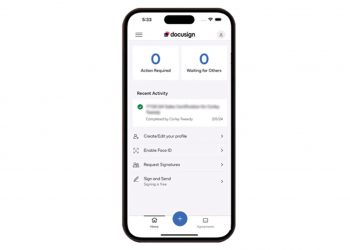This week my travels brought me to Uncasville, Connecticut for an incredible event at the Mohegan Sun, led by Berkshire Hathaway HomeServices New England Properties/New York Properties/Hudson Valley Properties President and CEO Candace Adams. I congratulated the team on stage and was with them for a fantastic celebration, including a team dinner on Wednesday night.
The energy at the event was electric. It was the first time many of those team members had seen each other in person since the pandemic began. Candace did a fantastic job as emcee, and we heard from Steven and Debbie Domber, Steven James, Brad Loe and Allan Dalton. It was amazing to see how fired up Steven James and Brad Loe are to take over the New York market. When he spoke, Steven’s passion and energy left no doubt in anyone’s mind that his prediction to be No. 1 in New York would happen soon.
We then drove to Rye Brook, New York and spent the afternoon with Houlihan Lawrence President and CEO Liz Nunan where we toured the Houlihan Lawrence offices and had a luncheon in the Houlihan Lawrence Agent Development Center. I gave a leadership presentation and then attended an agent networking open house.
We then drove to Manhattan, where I write this post to you now, and because the Big Apple is so inspiring to me, it’s our topic for today.
New York City has a vibe unlike anything I’ve ever experienced. It’s palpable. You can practically reach out and touch it, as it buzzes in shades of taxi-cab yellow and skyscraper gray across the city that never sleeps. Here are a few ways I’ve been inspired by the people and places of this global metropolis:
First in, last out. In his aptly named book, “First In, Last Out,” New York City Fire Department (FDNY) Battalion Chief John Salka explains how the FDNY’s strategies can be applied to any business and any leader. By first in and last out, Salka references the idea that a leader, just like those who lead the FDNY, should always be the proverbial first one to charge into the room when it’s on fire, and the last one to leave before the fire is completely extinguished. It’s a lesson in ultimate accountability; as the leader, you are the person others follow and you also set the example, never abandoning even a burning building until the flames of challenge are extinguished and you’re treading on safer, more sustainable, more successful ground.
Gratitude unlocks endless improvement. When asked for our #LeadershipPGI social media series about the one thing she’s doing this week to become better than she was last week, Liz Nunan said this: “Practice daily gratitude. I find that it leads to a more positive mindset, helps when I need to deal with adversity, and has helped me build strong relationships, both personally and professionally.” Gratitude, as I say, is an attitude! And while it helps strengthen your mindset, as Liz explains, it also helps you on your path of perpetual improvement. With gratitude, you look forward, you think positively, and you see the potential in situations rather than whatever is holding you back.
Your team can never hear enough how much you appreciate them. When Candace Adams was asked the same question—“What are you doing to improve this week so you’re even better than you were last week?”—she said: “I am going to reach out to as many people as I can to say thank you for who they are and what they do.” And showing how much you care isn’t just good for strengthening trust, connection, and respect among your team, it also strengthens the team itself. In a 2020 Harvard Business Review article, authors Kerry Roberts Gibson, Kate O’Leary and Joseph R. Weintraub wrote that letting your team know you appreciate them enhances productivity and the team’s ability to perform given tasks. Why? Because everyone wants to know that the hard work they’re putting in doesn’t go unnoticed.
Team members need a voice—and that voice must be heard. Writing for the Harvard Business Review, authors Bruce A. Strong and Mary Lee Kennedy documented the process of change at the New York Public Library, one of the largest public libraries worldwide. An estimated 18 million people visit the library each year. (And one of them was Sylvester Stallone who wrote the screenplay to “Rocky” in three days at the New York Public Library.) So, when it became clear the library needed to shift its strategies amid an ever-changing digital world, what did the leaders at the New York Public Library do? They asked employees exactly what should happen next. In the spring of 2014, any of the 2,500 staff members had the chance to speak directly with senior leaders, offering their best ideas to digitize the library system. The staff was asked to propose, test and advocate solutions. The senior leaders provided guidance, support, resources and made decisions on those ideas, but it was the staff whose ideas would be carried through. “The project expanded their sense of belonging,” the authors wrote in the Harvard Business Review. And it’s a lesson any leader can take back to their teams. Sometimes problems can’t be solved unilaterally, and instead it takes a collaborative, concerted effort by all to create the change you seek, whether it’s digitizing a massive public library in NYC or providing even better service to your clients.
So, what’s the message? Artist Georgia O’Keeffe once said, “One can’t paint New York as it is, but rather as it is felt.” And I felt that this week in New York. It’s a city that constantly reminds us that sometimes leadership is a set of principles, sometimes it’s a system of execution and sometimes, it’s a feeling that guides us exactly where we want—and need—to go.
This article is adapted from Blefari’s weekly, company-wide “Thoughts on Leadership” column from HomeServices of America.











